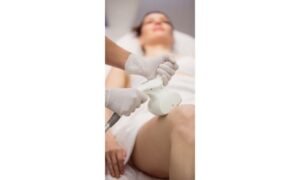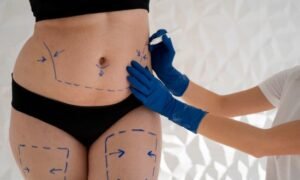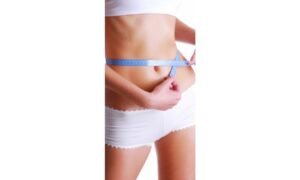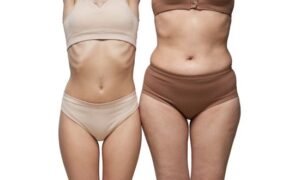CoolSculpting is a popular non-surgical fat reduction treatment that can help you achieve a more sculpted appearance. Before considering CoolSculpting, it’s important to understand how it works and what results you can expect. CoolSculpting before and after results can be truly transformative. Here’s detailed overview of this procedure.
What is CoolSculpting?
CoolSculpting is also known as cryolipolysis. It is a non-invasive fat reduction treatment that uses freezing temperatures to target and destroy fat cells. CoolSculpting got FDA approval in 2010. It be an effective way to reduce stubborn fat pockets that are resistant to diet and exercise.
How Does CoolSculpting Work?
- CoolSculpting works by targeting and freezing fat cells, causing them to crystallize and die.
- The body then naturally eliminates the dead fat cells over the following weeks and months, resulting in a more sculpted appearance.
CoolSculpting Procedure
- Preparation
Before the procedure your healthcare provider will assess your target areas and mark them for treatment. You will be asked to lie down on a comfortable treatment table. A gel pad or gel sheet will be placed on the skin to protect it during the procedure.
- Application of the Cooling Device
The CoolSculpting device consists of applicators that are applied to the skin’s surface and deliver controlled cooling to the targeted fat cells. The applicator suctions the skin and fat into the device. Areas are then cooled to a temperature that freezes the fat cells without harming the surrounding tissues.
- Cooling Cycle
The treatment cycle begins once the cooling device is applied. The cooling process typically lasts between 35 minutes to 1 hour and 15 minutes. It depends on the size of the area being treated and the number of applicators used. As the device works to freeze the fat cells, you may feel a cold sensation and some pressure.
- Post-Treatment Massage
After the cooling cycle is complete, the applicator is removed. The treated area may be massaged by your healthcare provider. This massage helps to break up the frozen fat cells and improve the effectiveness of the treatment.
Who Is CoolSculpting for?
- CoolSculpting is not a weight loss solution but a way to target stubborn fat bulges that don’t respond to diet and exercise.
- Avoid CoolSculpting if you have certain medical conditions like loose skin, poor skin tone or cold-related conditions.
Areas Treated with CoolSculpting
- Under the chin and jawline
- Thighs
- Belly
- Back and sides
- Under the butt
- Along the bra line
- Upper arm
Benefits of CoolSculpting
- CoolSculpting does not require incisions or anesthesia, making it a safe and convenient option for fat reduction.
- CoolSculpting can target specific areas of the body where stubborn fat is present such as the abdomen, thighs and love handles.
- CoolSculpting requires minimal downtime unlike surgical procedures. It allows patients to resume their normal activities shortly after treatment.
CoolSculpting Before and After
- Before CoolSculpting Treatment
Before undergoing CoolSculpting treatment, there are several important steps to take to ensure the best possible results:
- Schedule a consultation with a qualified CoolSculpting provider to discuss your goals and determine if you are a good candidate for the treatment.
- Provide your medical history, including any previous surgeries, medical conditions, and medications you are taking.
- Undergo a physical examination to assess your overall health and determine the areas that will be treated.
- Your provider will create a personalized treatment plan based on your goals and the areas you want to target.
- During CoolSculpting Treatment
During the CoolSculpting treatment, you can expect the following:
- The CoolSculpting applicator will be placed on the targeted area.
- The applicator will deliver controlled cooling to the fat cells, causing them to freeze.
- You may feel a cold sensation initially, followed by numbness in the treated area.
- Each treatment session typically lasts about 35-60 minutes, depending on the size of the area being treated.
- After CoolSculpting Treatment
After the CoolSculpting treatment, you may experience the following:
- It’s normal to experience redness, swelling, and bruising in the treated area, which usually resolves within a few days to weeks.
- You may experience temporary numbness or tingling in the treated area, which can last for a few weeks.
- Results from CoolSculpting are not immediate and typically appear gradually over the following weeks to months as the body eliminates the destroyed fat cells.
- Your provider will schedule follow-up appointments to assess your results and determine if additional treatments are needed.
- CoolSculpting Before and After Results
- Stubborn fat pockets in the targeted area before CoolSculpting.
- After CoolSculpting there will be gradual reduction in fat volume, leading to a more sculpted appearance.
Side Effects of CoolSculpting
CoolSculpting is generally considered a safe procedure, but like any medical treatment, it can have side effects. Most side effects are mild and temporary, but in rare cases, more serious side effects can occur. It’s important to discuss potential side effects with your healthcare provider before undergoing CoolSculpting treatment.
A. Common Side Effects
- Temporary Redness or Swelling: After the procedure, you may experience temporary redness, swelling, bruising, or skin sensitivity in the treated area. These side effects usually resolve on their own within a few days or weeks.
- Tingling or Numbness: Some people may experience tingling or numbness in the treated area, which typically resolves on its own over time.
- Sensitivity: The treated area may feel sensitive to touch or pressure for a few days after the procedure.
B. Less Common Side Effects
- Pain or Discomfort: Some people may experience mild to moderate pain or discomfort in the treated area, which can be managed with over-the-counter pain medication.
- Itching: Itching in the treated area is uncommon but can occur. Avoid scratching the area to prevent irritation.
- Diarrhea: In rare cases, CoolSculpting can cause diarrhea, which is usually mild and resolves on its own.
C. Rare Side Effects
- Paradoxical Adipose Hyperplasia (PAH): PAH is a rare complication where the treated area becomes larger instead of smaller due to an increase in fat cells. It typically occurs a few months after the procedure and may require additional treatment.
- Hypersensitivity: Some people may experience increased sensitivity in the treated area, which can cause discomfort. This side effect is rare and usually resolves on its own.
D. Serious Side Effects
- Nerve Pain: In rare cases, CoolSculpting can cause nerve pain in the treated area. This side effect is usually temporary but may require medical attention.
- Changes in Skin Pigmentation: CoolSculpting can cause changes in skin pigmentation, such as darkening or lightening of the skin, in the treated area. These changes are usually temporary but may be permanent in some cases.
Contraindications for CoolSculpting
It’s important to discuss your medical history with your healthcare provider before undergoing CoolSculpting to ensure that it is safe for you. CoolSculpting is not recommended in following cases:
- Pregnancy and Nursing: CoolSculpting is not recommended for pregnant or nursing women, as the effects of the procedure on the fetus or breast milk are not known.
- Obesity: CoolSculpting is not a weight loss procedure and is not suitable for individuals who are obese. It is designed to target specific areas of stubborn fat that are resistant to diet and exercise.
- Cryoglobulinemia: This condition causes abnormal proteins in the blood to thicken in cold temperatures, which can increase the risk of complications from CoolSculpting.
- Cold Urticaria: This skin condition causes hives to form when the skin is exposed to cold temperatures, which can be exacerbated by CoolSculpting.
- Paroxysmal Cold Hemoglobinuria: This rare type of anemia causes red blood cells to be destroyed in cold temperatures, increasing the risk of complications from CoolSculpting.
- Poor Skin Tone: CoolSculpting may not be suitable for individuals with poor skin tone, as it can lead to uneven results.
- Nerve Problems: Individuals with nerve problems in the area to be treated may not be suitable candidates for CoolSculpting, as the procedure can cause nerve pain.
- Rashes or Lesions: CoolSculpting should not be performed on areas of the skin that have rashes, lesions, or other skin conditions, as this can increase the risk of infection or other complications.
- Varicose Veins: CoolSculpting should not be performed on areas of the body with varicose veins, as this can increase the risk of complications.
CoolSculpting Cost
- Cryolipolysis is considered a cosmetic treatment, so insurance won’t cover it.
- The cost varies depending on the body part treated, the number of sessions, the provider, and the location.
- According to the CoolSculpting website, a personalized treatment plan typically costs between $2,000 and $4,000.
CoolSculpting Alternatives
- Liposuction
- Tummy tuck
- Heat treatments (SculpSure)
- Deoxycholic acid injection (Kybella)
- Radiofrequency procedures (truSculpt, Vanquish)
- Cold laser treatments (Zerona)
- Electromagnetic treatments (Emsculpt)
FAQs
- What is the purpose of CoolSculpting?
CoolSculpting aims to reduce stubborn fat in specific areas of the body without surgery.
- How does CoolSculpting eliminate fat cells?
CoolSculpting freezes fat cells, causing them to crystallize and die, which are then naturally eliminated by the body.
- Does CoolSculpting cause pain?
During the procedure, you may feel a cold sensation and some pressure, but any discomfort usually subsides as the area becomes numb.
- How long does a CoolSculpting session last?
A CoolSculpting session typically lasts between 35 minutes to 1 hour and 15 minutes per treated area.
The Bottom Line
CoolSculpting is a safe and effective way to reduce stubborn fat pockets. It will help you achieve a more sculpted appearance. With minimal downtime and targeted results, CoolSculpting is a popular option for those looking to reduce stubborn fat. Consult with a qualified CoolSculpting provider to learn more about this innovative fat reduction treatment.
Disclaimer
Content on this site is written with thorough research and keeping in mind the latest guidelines. However, no content on this site should substitute professional consultation.

My brother suggested I might like this blog. He
was once entirely right. This publish truly made my day.
You ccan not imagine simply how a lot time I had spent for this info!
Thanks! https://www.waste-Ndc.pro/community/profile/tressa79906983/